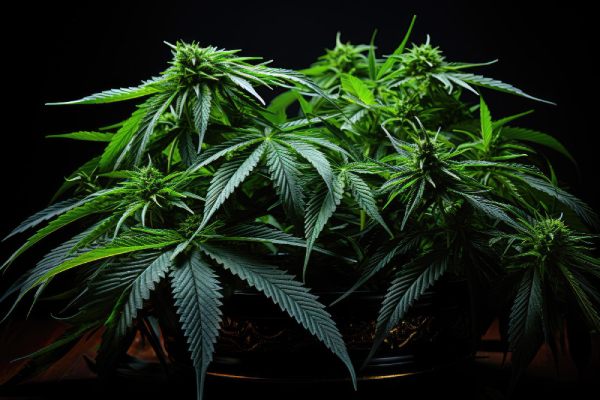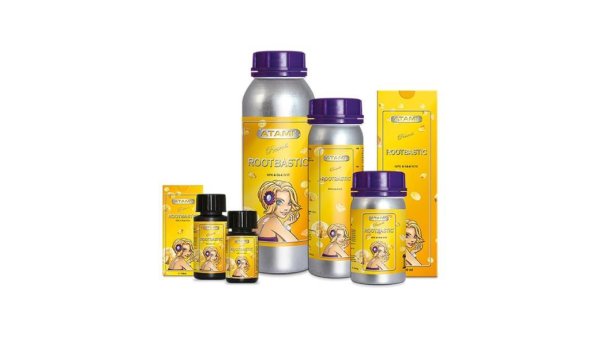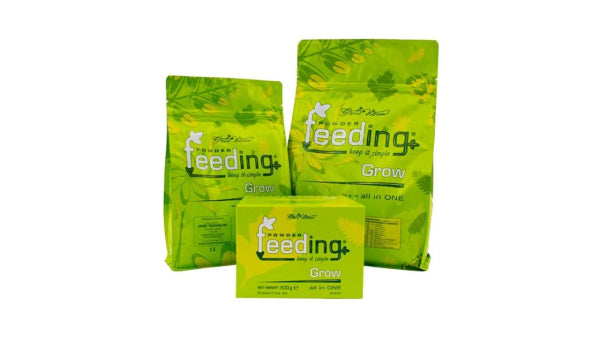Best price on the market

Importance of Copper in Marijuana Plants
Copper is an essential micronutrient for the healthy growth of marijuana plants, playing a crucial role in photosynthesis, cellular respiration and structural strengthening. Its deficiency can cause chlorosis and leaf deformation, while excess leads to toxicity. It is vital to monitor and adjust copper levels through soil testing and proper fertilizer management to keep plants in optimal condition and ensure a successful crop.
Growing marijuana, like any other agricultural crop, relies heavily on a careful balance of essential nutrients to ensure healthy plant growth and optimal production. Among essential nutrients, macronutrients such as nitrogen, phosphorus, and potassium typically receive the most attention. However, micronutrients, although required in smaller quantities, are equally crucial for plant development. One of these essential micronutrients is copper, an element that, although needed in small doses, plays vital roles in numerous aspects of the growth and health of the marijuana plant.
What Copper Is Used for in Marijuana Plants
What is copper sulphate used for in plants? It is a vital micronutrient that plays several crucial roles in the development and health of marijuana plants. Copper is essential for the correct functioning of various processes in the marijuana plant. The adequate presence of copper also contributes to the structural strengthening of marijuana plants by influencing the integrity of their cell walls and lignin synthesis, resulting in stronger and more resistant stems.
Benefits of Copper in Marijuana Plants
Copper is a vital micronutrient that plays key roles in the development and health of marijuana plants. Here are its main benefits:
- Boosts Photosynthesis: Copper is essential for efficient photosynthesis, facilitating the transformation of sunlight into chemical energy necessary for plant growth.
- Improves Cellular Respiration: Acts as a catalyst in several important enzymatic reactions that help convert sugars into energy, vital for the growth and development of the plant.
- Strengthens Plant Structure: Copper influences the synthesis of lignin, a critical part of the cellular structure of plants that strengthens the stems and helps support the weight of the buds, increasing their resistance to strong winds and heavy rains.
- Protection Against Pathogens: It has fungicidal and bactericidal properties that protect plants from diseases, which is especially valuable in humid climates and growing conditions where plants may be more vulnerable to infections.
- Optimizes Bud Development and Maturation: Ensures that plants have the ability to develop and mature high-quality buds, directly affecting the potency and terpene profile of cannabis.

Symptoms and Prevention of Copper Deficiency in Marijuana
Copper deficiency in marijuana plants can manifest itself in several ways, and it is crucial to detect these symptoms early to avoid a negative impact on the plant's growth and production. One of the most common signs is chlorosis, which is characterized by yellowing of young leaves that can spread if the deficiency is not corrected. Unlike other deficiencies where chlorosis occurs first in old leaves, copper deficiency affects new leaves first because copper is a non-mobile nutrient within the plant.
Another notable symptom is the deformation of the leaves , which may appear twisted or deformed. In severe cases, the plant's terminal shoots may die and the leaves may develop ragged edges or a wrinkled appearance. Additionally, copper-deficient plants often exhibit stunted growth and a reduction in flowering quality and quantity.
Prevention of Copper Deficiency
Preventing copper deficiency is essential to maintaining a healthy and productive crop. An effective strategy is to select a suitable soil type that has a good capacity to retain micronutrients, including copper. Soils with high levels of organic matter often have an enhanced ability to supply copper to plants. Additionally, it is important to consider soil pH, as too high or too low a pH can limit copper availability. Generally, a pH between 6.0 and 7.0 is ideal for optimal copper absorption.
Fertilization practices also play a crucial role in preventing copper deficiency. Using fertilizers that contain copper in the recommended doses can help maintain adequate levels of this micronutrient. It is essential to follow the manufacturer's instructions and avoid over-fertilizing, which can lead to a nutrient imbalance and affect copper availability. Additionally, growers should consider conducting soil or plant tissue testing periodically to monitor copper levels and adjust fertilization practices as necessary.
Solutions to copper deficiency in Cannabis plants
Correcting copper deficiency in marijuana plants is essential to ensure healthy growth and optimal production. Here are some effective strategies to address this problem.
- What to Do to Fix a Copper Deficiency: To correct a copper deficiency, it is essential to act quickly. First, check the pH of the substrate, as an incorrect pH can block copper absorption. Adjust the pH to a range of 6.0 to 7.0. Next, apply a fertilizer that contains copper. It is important to follow the manufacturer's instructions to avoid overdose, which could be counterproductive.
- Root Washing to Restore the Health of the Root Zone: Root washing is a process that consists of cleaning the root system of the plant, eliminating excess salts and accumulated minerals that can affect the absorption of nutrients such as copper. This procedure involves watering the plants with clean, pH-adjusted water, which helps restore the chemical balance in the soil or substrate.
- Other Options to Treat Copper Deficiency: If adjusting the pH and direct application of copper are not enough, other options include the use of copper chelates, which are forms of copper more easily absorbed by the plant. Chelates can be particularly useful in soils with high alkalinity or low organic matter problems.
Necessary Amount of Copper
During different stages of growth, copper needs may vary slightly. In the vegetative growth phase, copper helps in the development of strong roots and the formation of the basic structure of the plant. As the plant enters the flowering stage, copper remains important for photosynthesis and respiration, processes essential for bud formation and maturation. The amount of copper needed in cannabis plants varies depending on different factors, including the stage of growth:
- Germination and Vegetative Growth: During these early stages, plants require relatively low levels of copper. An adequate supply ensures proper development of young roots and initial growth of stems and leaves.
- Flowering and Ripening: As plants enter the flowering phase, copper demand may increase slightly. This micronutrient is crucial for the formation of healthy flowers and for maximizing the production of cannabinoids and terpenes, thus improving the quality and potency of the buds.
The typical concentration of copper in a nutrient solution for cannabis should be in the range of 0.05 to 0.5 ppm (parts per million). It is vital to monitor and adjust these concentrations, since both deficiency and excess of copper can cause significant problems in the crop. Maintaining a precise balance is crucial for optimal plant development and maximization of its genetic potential.
Recommended Products and Their Correct Application for Copper Deficiency
Treating copper deficiency in marijuana plants involves the careful use of specific products designed to supply this essential micronutrient. Here's how to properly use copper sulfate, one of the most common treatments:
Rootbastic Atami
Rootbastic is a highly concentrated root stimulator produced by Atami , a company known for its high-quality nutrients and additives for plants. If you are wondering what the best root stimulator is, visit our article to find out how to choose it and what the best products are. .
This product is designed to increase the expansion and health of the root system of plants during the early phases of growth or at critical times of transplant stress. Rootbastic's formula incorporates a robust combination of nutrients and biostimulants that promote vigorous root development and improves overall plant resistance.
Rootbastic Atami contains a mixture rich in phosphorus (P), potassium (K) and a number of amino acids and vitamins. Phosphorus and potassium levels are particularly high compared to other root stimulators, helping to promote rapid and strong root growth. Additionally, it includes:
- NPK (4-14-4): Indicates that the product contains nitrogen. 3.69%, phosphorus pentoxide. 14.12%, potassium oxide. 4.07%, natrium oxide. 0.19%, calcium oxide. 0.23%, magnesium oxide. 0.16%, sulfur trioxide.0.59%, boron. 0.014%, copper. 0.036%, iron. 0.101%, manganese. 0.042%, zinc. 0.043%, a ratio that stimulates root development.
- Amino acids: Organic compounds that help in the formation of proteins, essential for the growth of new root cells.
- Vitamins: They include vitamin B1 and other B vitamin complexes that strengthen resistance to stress and enhance the plant's energy metabolism.
How to correctly apply Rootbastic:
Application of Rootbastic must be done carefully due to its high concentration. Here are the recommendations for use:
- Dosage: Start with a low dose, especially on young or sensitive plants. The recommended dosage is 0.1 to 0.3 ml per liter of irrigation water.
- Frequency: Apply during the first three to six weeks of the plant's life cycle, coinciding with the phases of rapid root growth.
- Application Method: Mix Rootbastic with irrigation water and apply to the root zone. Be sure to adjust the pH of your irrigation water after adding Rootbastic, maintaining an ideal pH between 5.5 and 6.5 to maximize nutrient absorption.
- Compatibility: Rootbastic can be used in combination with other nutrients and additives, but it is important to avoid overfeeding. Always check the plants' response to adjust the dosage if necessary.
Grow Green House Feeding
Green house feeding Grow is a powder fertilizer formulated specifically for the vegetative growth phase of cannabis plants. This product is part of a line of fertilizers from the renowned Green House brand, which is designed to simplify the nutrition process by offering specific formulas for different stages of the plant's life cycle . Grow is especially useful for promoting vigorous development in the vegetative phase, preparing plants for abundant and healthy flowering. Grow contains a balanced mix of macronutrients and micronutrients essential for plants in their growth stage. Its main chemical compounds include:
- NPK (24-6-12): A high proportion of nitrogen (24%), followed by phosphorus (6%) and potassium (12%), which is ideal for vegetative growth. Nitrogen is essential for leaf mass and stem development, while phosphorus and potassium support root development and overall plant health.
- Micronutrients: Includes elements such as iron, manganese, zinc, copper, molybdenum and boron, which are crucial for different metabolic and enzymatic processes within the plant.
How to correctly apply Grow:
The correct application of Green house feeding Grow is vital to maximize its effectiveness and avoid overfertilization problems:
- Dosage: The recommended dosage is 1 to 2 grams per liter of water, depending on the growth stage and specific needs of the plant.
- Frequency: Apply with each irrigation during the vegetative growth phase. It is not necessary to add it daily if watered frequently, but it should be adjusted according to the plants' response.
- Application Method: Dissolve the powder completely in water before applying it. It is important to ensure that the fertilizer is completely solubilized to avoid the build-up of salts in the soil or growing medium.
- pH adjustment: After mixing Grow in the irrigation water, check and adjust the pH of the water. Ideally, the pH should be in the range of 5.5 to 6.5 to ensure optimal nutrient absorption.
Canna Start by Canna
CANNA Start is a unique and balanced fertilizer, specially formulated for seedlings and cuttings in their early stages of growth. It is part of the CANNA product line, a brand well known in the hydroponics and cannabis growing industry for its high-quality nutritional solutions. CANNA Start provides young plants with all the essential macro- and micronutrients needed for an optimal start to life. CANNA Start has a formula that is designed to meet the nutritional needs of plants in their early stages. Components include:
- NPK (2-1-2): This nutritional balance with 2% nitrogen, 1% phosphorus and 2% potassium is ideal for initial development. Nitrogen supports foliar growth, while phosphorus encourages root development and potassium improves overall plant health and resilience.
- Micronutrients: Includes essentials such as iron, manganese, zinc, copper, molybdenum and boron, which are crucial for early development and help establish a strong foundation for future growth.
How to correctly apply CANNA Start:
Proper application of CANNA Start is crucial to ensure that young plants receive the necessary nutrients without the risk of overfertilization, which can be especially harmful at this vulnerable stage.
- Dosage: The general recommendation is 2 to 4 ml per liter of water. However, it is important to follow the specific instructions on the container, as the concentration may need adjustments depending on the growing medium and irrigation system.
- Frequency: Apply with each irrigation during the seedbed and cuttings phase. CANNA Start is safe to use with every watering due to its gentle formulation, designed specifically for young plants.
- Application Method: Mix well with water before use and ensure that the product is completely solubilized. Apply this solution directly to the growing medium, whether soil, coconut or hydroponic systems.
- pH adjustment: After preparing the nutrient solution with CANNA Start, adjust the pH of the water between 5.5 and 6.2 to maximize nutrient uptake by young roots.
Cali Pro Grow A+B by Emerald Harvest
Cali Pro Grow A+B from Emerald Harvest is a two-part fertilizer system designed specifically for the vegetative growth phase of plants. This product combines essential nutrients in two separate solutions, A and B, that work together to provide complete and balanced nutritional support, facilitating robust and healthy growth. It is ideal for growers looking to maximize the efficiency of their feeding program and ensure optimal development of their plants during the vegetative stage. Cali Pro Grow Solutions A and B contain a blend of macronutrients and micronutrients that must be mixed together before use:
- Part A: includes high concentrations of nitrogen and potassium, along with essential micronutrients such as iron, copper, manganese, molybdenum, sodium and zinc.
- Part B: Supplement this with phosphorus, magnesium, and the remaining micronutrients needed for complete nutrition.
- Part A NPK: Generally higher in nitrogen.
- Part B NPK: Balanced with emphasis on phosphorus and potassium.
This division ensures that nutrients that could react with each other and form insoluble precipitates are kept separate until the time of application.
How to correctly apply Cali Pro Grow A+B:
The correct mixture and application of Cali Pro Grow A+B are crucial for the effective absorption of nutrients:
- Dosage: The typical dosage for each part is 1 to 4 ml per liter of irrigation water, depending on the growth stage and specific needs of the plants.
- Preparation: First mix Part A in the water and shake well. Then add Part B and mix again. It is essential not to mix parts A and B directly before diluting them in water to avoid unwanted chemical reactions.
- Frequency: Apply this nutritional solution at each irrigation during the vegetative growth phase. Make sure not to overfeed, adjusting doses according to the responses observed in the plants.
- pH Adjustment: After preparing the nutrient solution with Cali Pro Grow A+B, it is important to adjust the pH of the water to a range of 5.5 to 6.5 to optimize nutrient absorption.
Managing Excess Copper
Proper management of copper levels in marijuana plants is crucial to avoid toxicity, which can be just as harmful as deficiency. Here we will discuss how to avoid excess copper and how to differentiate its symptoms from problems caused by general overfertilization.
How to Avoid Excess Copper in Marijuana Plants
Excess copper in marijuana plants can primarily arise from overfertilization or soil naturally rich in copper. To prevent these problems, it is important to follow some tips:
- Careful Use of Fertilizers: Always follow the manufacturer's instructions when applying fertilizers containing copper. Use the recommended quantities and avoid too frequent applications.
- Soil Testing: Perform soil tests regularly to determine levels of copper and other nutrients. This is especially important if grown in areas where soils may be naturally high in heavy metals.
- Soil pH Adjustment: Maintaining a soil pH in the optimal range (6.0-7.0 for most cannabis plants) can help prevent excessive copper availability, as an extremely low pH can increase copper solubility. .
- Use of Chelating Agents: Chelators can help control copper levels by making it less available to plants. These can be useful in soils with copper toxicity problems.
Symptoms of Excess Copper vs. Fertilizer Burns
Distinguishing between symptoms of copper toxicity and fertilizer burn is essential for correct diagnosis and appropriate treatment.
Excess Copper:
- The young leaves of the plant may have an unusual dark green color.
- Appearance of brown or black spots on the leaves.
- The roots may become dark and stiff.
- Delayed growth and reduction in leaf size.
Fertilizer Burns:
- It usually affects the tips and edges of the leaves, which turn brown or burn.
- It can affect all leaves, not just the young ones.
- Excess fertilizer can also cause rapid vertical growth with thin, brittle leaves.
- Appearance of a visibly saline substrate.
By observing the symptoms and taking appropriate preventive actions, you can avoid excess copper and effectively manage overfertilization problems, thus ensuring the health and success of your marijuana crop.



